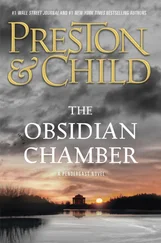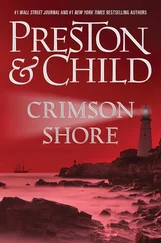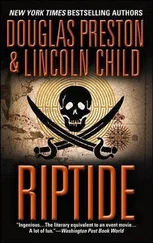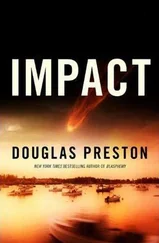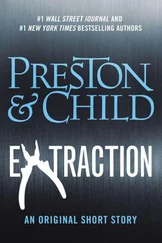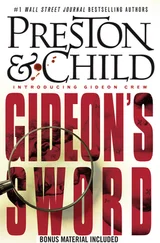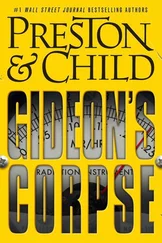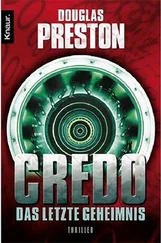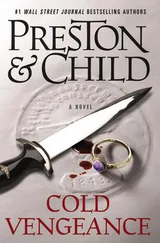Douglas Preston - Mount Dragon
Здесь есть возможность читать онлайн «Douglas Preston - Mount Dragon» весь текст электронной книги совершенно бесплатно (целиком полную версию без сокращений). В некоторых случаях можно слушать аудио, скачать через торрент в формате fb2 и присутствует краткое содержание. Город: New York, Год выпуска: 1996, ISBN: 1996, Издательство: A Tor Book; Published by Tom Doherty Associates, Inc., Жанр: Триллер, на английском языке. Описание произведения, (предисловие) а так же отзывы посетителей доступны на портале библиотеки ЛибКат.
- Название:Mount Dragon
- Автор:
- Издательство:A Tor Book; Published by Tom Doherty Associates, Inc.
- Жанр:
- Год:1996
- Город:New York
- ISBN:0-812-56437-5
- Рейтинг книги:3 / 5. Голосов: 1
-
Избранное:Добавить в избранное
- Отзывы:
-
Ваша оценка:
- 60
- 1
- 2
- 3
- 4
- 5
Mount Dragon: краткое содержание, описание и аннотация
Предлагаем к чтению аннотацию, описание, краткое содержание или предисловие (зависит от того, что написал сам автор книги «Mount Dragon»). Если вы не нашли необходимую информацию о книге — напишите в комментариях, мы постараемся отыскать её.
Mount Dragon — читать онлайн бесплатно полную книгу (весь текст) целиком
Ниже представлен текст книги, разбитый по страницам. Система сохранения места последней прочитанной страницы, позволяет с удобством читать онлайн бесплатно книгу «Mount Dragon», без необходимости каждый раз заново искать на чём Вы остановились. Поставьте закладку, и сможете в любой момент перейти на страницу, на которой закончили чтение.
Интервал:
Закладка:
There was a brief silence, and a sudden hubbub of voices.
“But Dr. Levine!” one voice sounded over the crowd. “You still haven’t said what you plan to do about the suit.”
For a moment, Levine said nothing. Then he opened his mouth and began to laugh; a rich, full laugh that reached to the back of the lobby. Finally, he shook his head in disbelief, took out a handkerchief, and blew his nose.
“Your response, Professor?” the reporter urged.
“I just gave you my response,” said Levine, stowing the handkerchief. “And now I believe I have an award to receive.” He waved to the reporters with a final smile, took Toni Wheeler’s arm, and headed across the lobby toward the open doors of the banquet hall.

Carson stood before a bioprophylaxis table in Lab C. The lab was narrow and cluttered, the lighting almost painfully bright. He was rapidly learning the countless nuisances, minor and major, of working in a biohazard environment: the rashes that developed where the inside of the suit rubbed against bare skin; the inability to sit down comfortably; the muscular tension that came with hours of slow, careful movement.
Worst of all was Carson’s growing feeling of claustrophobia. He had always had a touch of it—he assumed it was growing up in the open desert spaces that made him susceptible—and this was just the kind of constricted environment he couldn’t stand. As he worked, the memory of his first terrified elevator ride in a Sacramento hospital kept surfacing, along with the three hours he had once spent in a subway train disabled beneath Boylston Street. The Fever Tank emergency-procedure drills were a regular reminder of the dangerous surroundings, as were the frequent mutterings about a “terminal fumble”: the dreaded accident that might someday contaminate the lab and all who worked in it. At least, Carson thought, he wouldn’t be confined to the Fever Tank much longer. Provided, of course, that the gene splicing worked.
And it had worked perfectly. He had done it many times before, at MIT, but this had been different. This was no dissertation experiment; he was involved with a project that could save countless lives and, perhaps, win them a Nobel Prize. And he had access to finer equipment than even the best-equipped laboratory at MIT.
It had been easy. In fact, it had been a breeze.
He murmured a few words to de Vaca, and she placed a single test tube into the bioprophylaxis chamber. At the bottom of the tube, the crystallized X-FLU virus formed a white crust. Despite the elaborate safety measures that constrained his every movement, Carson still had trouble comprehending that this thin film of white substance was terrifyingly lethal. Sliding his hands into the chamber through the rubberized armholes, he took a syringe, filled it with viral transport medium, and gently swirled the tube. The crystallized mass gently broke up and dissolved, forming a cloudy solution of live virus particles.
“Take a look,” he said to de Vaca. “This is going to make us all famous.”
“Yeah, right,” said de Vaca. “If it doesn’t kill us first.”
“That’s ridiculous. This is the safest lab in the world.”
De Vaca shook her head. “I have a bad feeling, working with a virus this deadly. Accidents can happen anywhere.”
“Like what?”
“Like what if Burt had become homicidal instead of just stressed out? He could have stolen a beaker of this shit and— well, we wouldn’t be here today, I can tell you that.”
Carson looked at her for a moment, thought of a reply, then shelved it. He was rapidly learning that arguments with de Vaca were always a waste of time. He uncoupled his air hose. “Let’s get this to the Zoo.”
Carson alerted the medical technician and Fillson, the animal handler, through the global intercom, and they started the slow journey down the narrow corridor.
Fillson met them outside the holding area, glaring at Carson morosely through his visor as if annoyed to be put to work. As the door swung open, the animals began their piteous screaming and drumming, brown hairy fingers curling from the wire mesh of the cages.
Fillson walked down the line of cages with a stick, rapping on the exposed fingers. The screaming increased, but the banging of the stick had the desired effect and all the fingers vanished back into the cages.
“Ouch,” said de Vaca.
Fillson stopped and looked toward her. “Excuse me?” he asked.
“I said ‘ouch.’ You were hitting their fingers pretty hard.”
Uh-oh , thought Carson, here we go .
Fillson gazed at her for a few moments, his wet bottom lip moving slightly behind his visor. Then he turned away. He reached into the cabinet and removed the same pump canister Carson had seen him use before, shuffled over to a cage, and directed its spray inside. He waited a few minutes for the sedative to take effect, then unlocked the cage door and carefully removed the groggy occupant.
Carson came forward for a look. It was a young female. She squeaked and looked up at Carson, her terrified eyes barely open, half-paralyzed by the drug. Fillson strapped her to a small stretcher and wheeled it to an adjoining chamber. Carson nodded to de Vaca, who handed the test tube, encased in a shockproof Mylar housing, to the technician.
“The usual ten cc’s?” the technician asked.
“Yes,” said Carson. This was his first time directing an inoculation, and he felt a strange mixture of anticipation, regret, and guilt. Moving into the next chamber, he watched as the technician shaved a small round area on the animal’s forearm and swabbed it vigorously with betadine. The chimpanzee drowsily watched the process, then turned and blinked at Carson. Carson looked away.
They were joined, silently, by Rosalind Brandon-Smith, who gave Fillson a broad smile before turning, stony-faced, toward Carson. One of her responsibilities was tracking the inoculated chimps and autopsying those who died of edema. So far, Carson knew, the ratio of inoculations to deaths had been 1:1.
The chimp didn’t flinch as the needle slid home.
“You realize you need to inoculate two chimps,” Brandon-Smith’s voice sounded in Carson’s headset. “Male and female.”
Carson nodded without looking at her. The female chimp was wheeled back into the Zoo, and Fillson soon returned with a male. He was even smaller, still juvenile, with an owlish, curious face.
“Jesus,” said de Vaca, “it’s enough to break your heart, isn’t it?”
Fillson glanced at her sharply. “Don’t anthropomorphize. They’re just animals.”
“Just animals,” de Vaca murmured. “So are we, Mr. Fillson.”
“These two are going to live,” said Carson. “I’m sure of it.”
“Sorry to disappoint you, Carson,” said Brandon-Smith, with a snort. “Even if your neutralized virus works, they’ll be killed and autopsied anyway.” She crossed her arms and looked at Fillson, receiving a smile in return.
Carson glanced at de Vaca. He could see an angry blush collecting on her face—a look that was becoming all too familiar to him. But she remained silent.
The technician slid the needle into the male chimp’s arm and smoothly injected ten cc’s of the X-FLU virus. He slipped the needle out, pressed a piece of cotton on the spot, then taped the cotton to the arm.
“When will we know?” Carson asked.
“It can take up to two weeks for the chimps to develop symptoms,” said Brandon-Smith, “although it often happens more quickly. We take blood every twelve hours, and antibodies usually show up within one week. The infected chimps go straight into the animal-quarantine area behind the Zoo.”
Carson nodded. “Will you keep me posted?” he asked.
Читать дальшеИнтервал:
Закладка:
Похожие книги на «Mount Dragon»
Представляем Вашему вниманию похожие книги на «Mount Dragon» списком для выбора. Мы отобрали схожую по названию и смыслу литературу в надежде предоставить читателям больше вариантов отыскать новые, интересные, ещё непрочитанные произведения.
Обсуждение, отзывы о книге «Mount Dragon» и просто собственные мнения читателей. Оставьте ваши комментарии, напишите, что Вы думаете о произведении, его смысле или главных героях. Укажите что конкретно понравилось, а что нет, и почему Вы так считаете.

